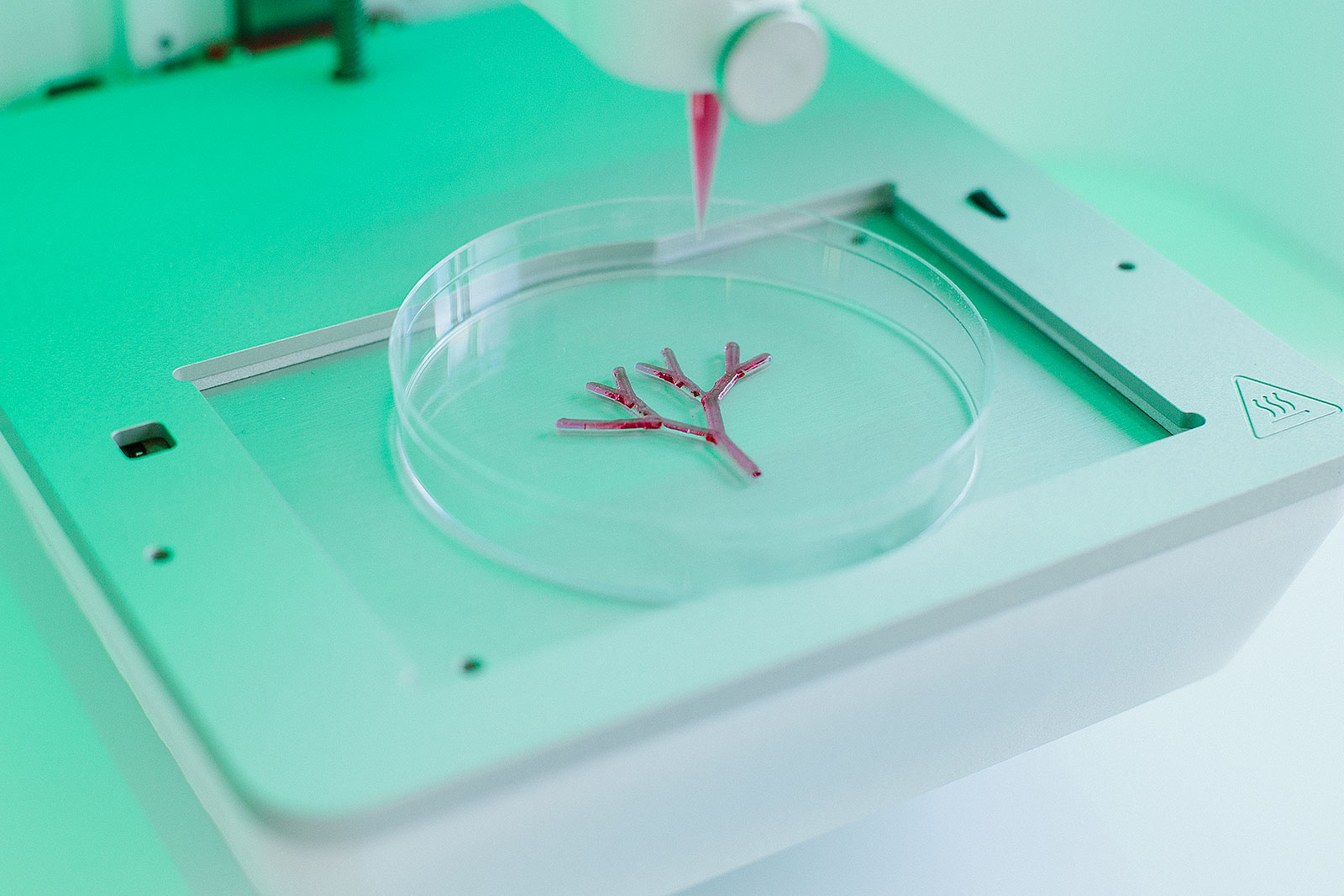Product prototypes, jewelry and car parts are just some of the many uses for 3D printing. But the technology can do a lot more than that these days. From prosthetics and prescription drugs to organs and tumors, 3D printing and bioprinting are revolutionizing the medical sphere in stunning ways.
Traditional 3D printing has been around for a while—since the 1980s, in fact. It’s an additive manufacturing technology, meaning it can construct a physical, three-dimensional object using data computer-aid-design (CAD) software or digital 3D models. The printer is instructed to add material layer by layer to create the object. Typical 3D printers can print materials like plastic, rubber and metal, which is what the general public has become more familiar with over recent years.
The medical field, however, is now taking it a step further with bioprinting. Building upon the additive manufacturing technology of regular 3D printers, bioprinters can create living tissue, from blood vessels or bone to—one day—entire organs to be used for medical training, procedures and research. While the complexity of bioprinting means it is developing at a slower pace than 3D printing has, leaps and bounds are made every day.
Erik Gatenholm, CEO and co-founder of CELLINK, believes these advances in bioprinting can revolutionize health care and change the future of medicine. “I have always been fascinated by the possibilities 3D bioprinting would present if the technology became widely available,” he says. “Health care can be taken to a whole new level, from eliminating the need for animal testing to creating a much more personalized approach.”
When it comes to the accessibility of 3D bioprinting, CELLINK is a biotech company that has taken the industry by storm. In 2016, the startup commercialized the world’s first universal biochemical ink, the material used to create the artificial live tissue that bioprinters produce. Bioink consists of either natural or synthetic cells and a biopolymer gel that serves as a scaffolding for the cells to grow. Since CELLINK’s commercialization of its bioink, more than 1,800 labs in more than 60 countries have utilized the product and the company’s other innovations like bioprinters.
“We [have] built and commercialized our own printer, democratizing access to the technology,” says Gatenholm. “Our printers have been able to be purchased for as low as $5,000 which completely disrupted the industry. Today, with our patented ‘bioink’ technology and 3D bioprinters, researchers and scientists at labs both big and small can print real human tissues for clinical research.”
Cancer research is one such area of focus utilizing 3D bioprinting. CELLINK recently partnered with biotech startup Carcinotech to advance 3D bioprinting technology for this exact purpose. Carcinotech produces cancer research models for drug testing, cancer drug discovery and the study of cancer biology. Through the partnership, the companies aim to change how cancer research and treatment are approached in order to give care a more personal touch.
“Using biopsies taken from oncology patients, researchers at Carcinotech are printing replicated tumor copies that enable them to test multiple treatments for efficacy prior to administering to the patient,” Gatenholm explains. “While the research is still in the early phases, we envision a future where every hospital has a 3D bioprinter to enable personalized medicine at the point of care.” Doing so would hopefully remove the need for warriors to go through multiple rounds of chemotherapy or radiation that may not even work for their cancer type and genetic makeup.
Health care can be taken to a whole new level, from eliminating the need for animal testing to creating a much more personalized approach.
It may take some time before every oncology department has a 3D bioprinter at its disposal, but in the meantime, there are hospitals impressively utilizing 3D printing with select patients. Orthopedic surgeon Alan Blank at Chicago’s Rush University Medical Center is taking advantage of 3D printing with his oncology patients in three ways.
One method by Blank is the printing of 3D models of a patient’s tumor in order to plan his surgical movements prior to the procedure. “It really lets us kind of get our hands on the tumor before we go take it out in real life,” he explains.
Alongside printing tumors for the simulation, Blank also uses 3D printing to design and produce 3D-printed cutting guides, which are patient-specific guides of the individual’s anatomy. “These kinds of guides […] help to guide us in terms of where to make bone cuts to remove all of the tumor, while keeping the patient’s normal bone as much as possible to help with the later reconstruction of that bone effect,” says Blank.
3D printing also assists Blank in creating custom metal implants that can fit very specifically into the space of a removed tumor.
On the patient’s end, these applications will look no different compared to more traditional procedures with an orthopedic surgeon. The imaging and surgery intervals are the same, as is the recovery process. But behind the scenes, Blank is working closely with a team of software engineers to ensure the precision and accuracy of the 3D prints that he will be using before and during surgery.
For both patients and doctors alike, this increased familiarity with 3D printing in medical settings is the ideal foundation for the inevitable spread of 3D bioprinting in the same spaces. A report from IDTechEx estimates the global 3D printing market will be $7 billion by 2025, with about half coming from 3D bioprinting.
Companies like CELLINK are ensuring that cancer research and treatment remain at the forefront of this emerging technology, whether it’s through accessible products or partnering with other startups like Carcinotech. “Making an impact within cancer research and treatment has always been a priority for our company,” says Gatenholm. “We are big believers and advocates for collaboration and know this is the way to make real progress. The merging of technological fields such as robotics and engineering with biology will give rise to a revolution in health care that will change how we approach human health and medicine.”







